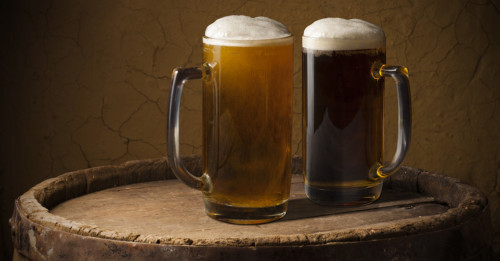Brown ales are darker than their pale cousins due to the choice and treatments of malts in the grain bill. In general, brown ales tend to have more of a malty flavor profile, not so much roasted as toasty, nutty, chocolatey, toffee, biscuit, etc., with less in the way of fruity esters and hops playing a supporting role in the background (unless, of course, it’s an American style, in which case hops rules usually change a bit…).
American Brown Ale Essential Info
- Color: Light to darker brown
- ABV: 4.3%-7%
- Commercial Examples: Dogfish Head Indian Brown Ale, Smuttynose Durty Mud Season Hoppy Brown Ale, Brooklyn Brown Ale
Inspired by the English Brown Ales and porters across the pond, American Brown ale is similarly malt-forward. But because it’s (typically) made with American ingredients (and for hop-loving American palates), American Brown Ales may have a tendency to let the hops peek out a little more aggressively, sometimes with fresh or citrusy flavors cutting into that richer malty quality. Bitterness from the hops will also likely be higher in American versions, often backed up by notes of toasty chocolate and caramel from the malt. Not a lot of fruit or esters here, and it shouldn’t get as hoppy as an IPA, but it won’t be malty-sweet either. Alcohol ranges really vary pretty widely, so check your bottle.
English Brown Ale Essential Info
- Color: Coppery or reddish to dark brown
- ABV: 2.8%-4.5%
- Commercial Examples: Kona Brewing Co. Big Wave Golden Ale, Victory Brewing Co. Summer Love, Southern Star Bombshell Blonde
In the same family as the English Mild style (which may be more roasted or fruitier), English Brown Ales showcase malt character, anything from toast, caramel, and toffee to chocolate, raisin, and coffee (and beyond). Hops are generally low here, and not really meant to take part in the overall impression, which can veer dry or sweet, depending on the style. English Brown Ales can also have geographic designations, e.g. “Southern English Brown Ale” being a darker, sweeter malt-forward beer (not as commonly available), while “Northern English Brown” is slightly more hoppy (in mild bitterness, not flavor), with malts that veer more toward biscuit, toffee, and nuttiness—much more available as a style. Good for sipping in a pub, or your living room, on a foggy day.
